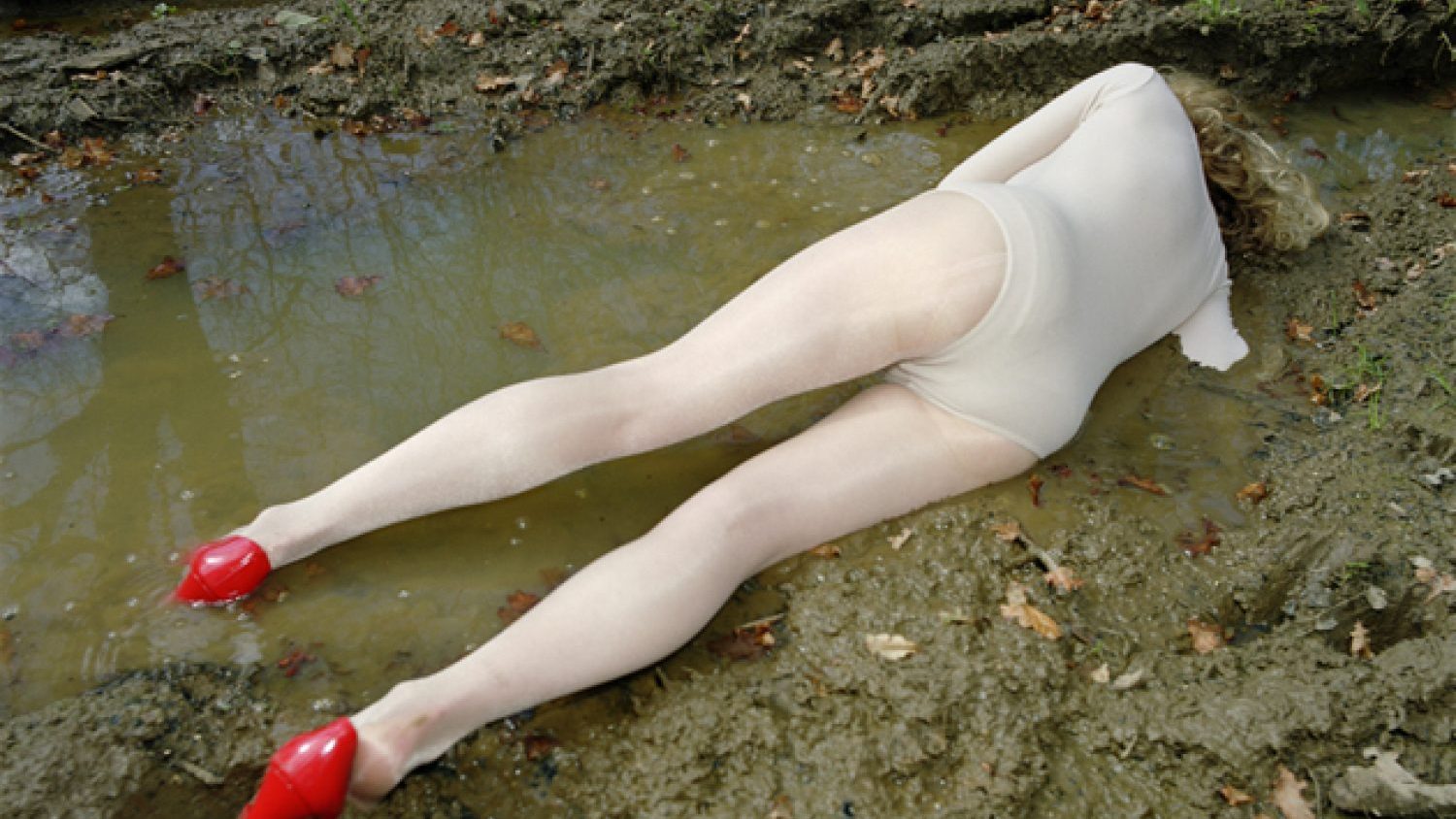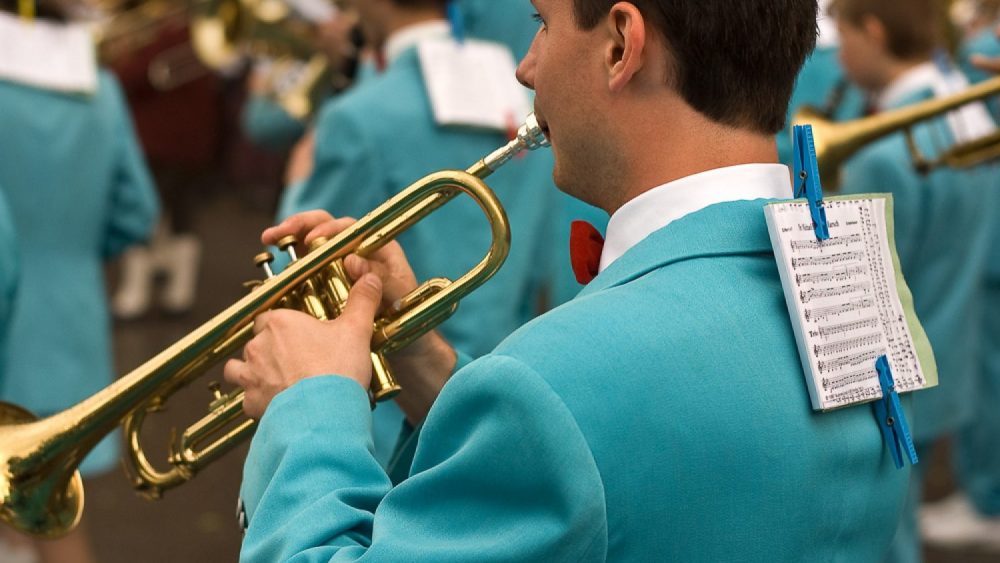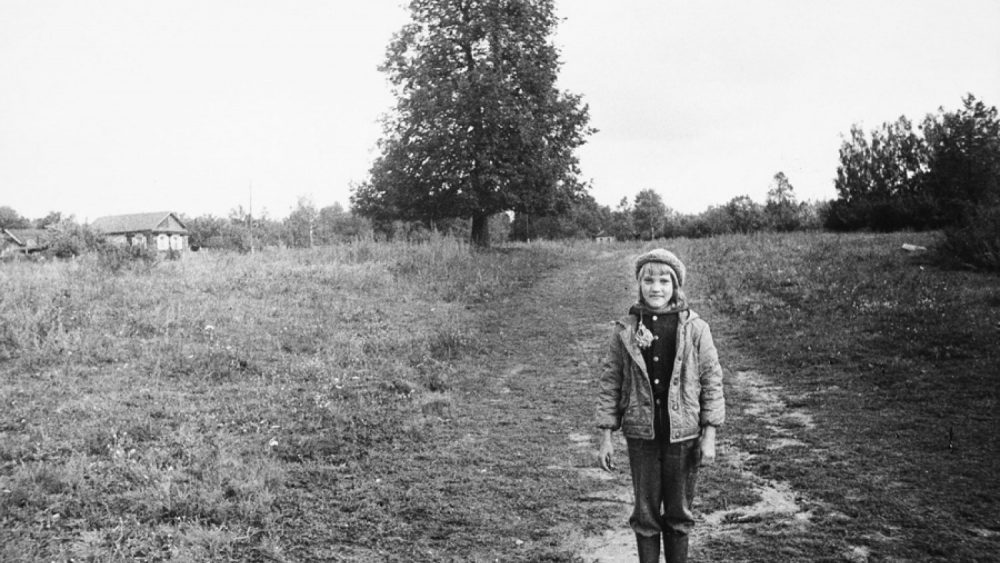Interview with Anna Fox
“Everything is interesting, even your doorstep,” says British photographer Anna Fox (1961) during her lecture at the International Summer School of Photography (ISSP) in Latvia. While staying in Pelči, Kuldīga district, the artist spent a week teaching photography master class. Anna Fox is one of the most significant figures in the new wave of British colour documentary photography of the 1980s. Her subject matter is the ordinary and the everyday, but through artistic vision Anna finds the absurd and the revelation. She received numerous awards such as the Hasselblad Foundation for New York Development (2000), British Council Visual Arts Award (2009), National Media Museum Award (2010), etc.
The topic of your workshop is The Human Nature. In your opinion, what general conclusions can be made about human nature?
Human nature is just an age old, fascinating theme. It is an immense theme of life and death. Yet, at the same time it is part of everyday life that concerns all of us starting from the moment we wake up (and probably even when we sleep).
As an artist what are you searching for?
I am interested in things that are often hidden or neglected, or considered unworthy of being photographed. I am also interested in living up things that have been photographed. As a story teller I am interested in both public and private issues and by showing aspects of both in my work it seems that I am looking both inward and outward – this is quite an interesting thing to do.

Going through your works, ordinary and banal scenes draw attention. Whether it’s people on holidays, office life, cockroaches, country girls, rave parties… What exactly attracts you to these everyday situations?
Sometimes it’s a commission and so I have to go to a certain place but usually somebody will ask me to do the commission because they know that I might be interested in that. So I’m driven to things that are either concealed in some way or their ordinariness means that their specialness is concealed. Office life, work stations I was commissioned to do but I had to apply for the commission. So there was a competition. I was attracted to it because it’s such an ordinary subject and hardly anyone had ever photographed office life. We couldn’t find any photos. So it was considered a nothing subject. The subject with zero importance to photographers, writers, filmmakers must be interesting, because it’s part of our lives. There are so many people working in offices. Moreover I worked in offices before I became a photographer. My whole family was working in offices. So it was something that intrigued me. I felt like I had to be in it and I was in it, as well as my family. It was a way of investigating ways of thinking from a different perspective. I worked in office, then I studied photography and now I’m entering the offices with my camera. I get a different and new perspective in an environment that I know as a worker.
How personal is your project Cockroach Diary?
There are a lot of cockroaches in London and it’s quite intriguing, but nobody talks about them. It is like an embarrassment for English people. We think that’s normal that they have cockroaches in Asia or New York, but not in London. In one of the places I lived in London there were plenty of them, and I was so frustrated and upset by them it made it better to be photographed because I wanted them to be there a bit.
Are you thinking that your photos somehow helped you to deal with your frustration and fear of them?
A little bit. I don’t think I was very comfortable in the world until I had a camera with me.
When you are demonstrating these photos to others what do you expect they will get from them?
The thing is that the project isn’t just about cockroaches; it’s more about a group of people living together in England. It’s like a comedy. Cockroaches are a metaphor for condition of life and a dysfunctional group existing in a house together. This is so typical when you’re in your twenties, thirties you’re often sharing a big house with lots of people. It seems like a utopia. It is also a way, how to save some money.
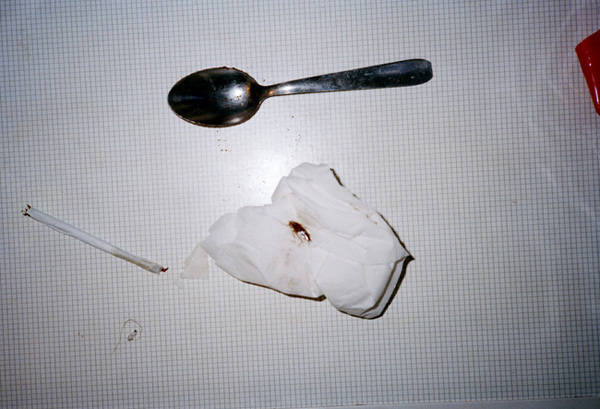
Could you tell more about your series Country Girls which intended to evoke the experience of young women living in the rural environment? Why did you decide to connect it with a murder story?
The murder story is just an extreme example of the sort of thing. We were interested in the kind of violence towards young women in the countryside. It was the 1970s we are talking about. The murder was in 1912. We were reflecting on our own experiences from the 1970s being young women in a small place. As there was a mixture of villages and towns, there was a lot of violence towards women. There is a lot of violence in small towns in general. I think life for young women was very restricted in the 1970s. It has changed now because of the Internet, more public transport, etc.
Who was the first artist that you found inspiring? Is there any exhibition, book or image that you remember for the first time really responding to?
My father was an amateur photographer and he had a lot of books on French photography particularly and I was very intrigued by the Henri Cartier-Bresson’s The Decisive Moment and Brassaï’s Paris by Night.
It’s absolutely different from your style.
Yes, but I started in black and white.
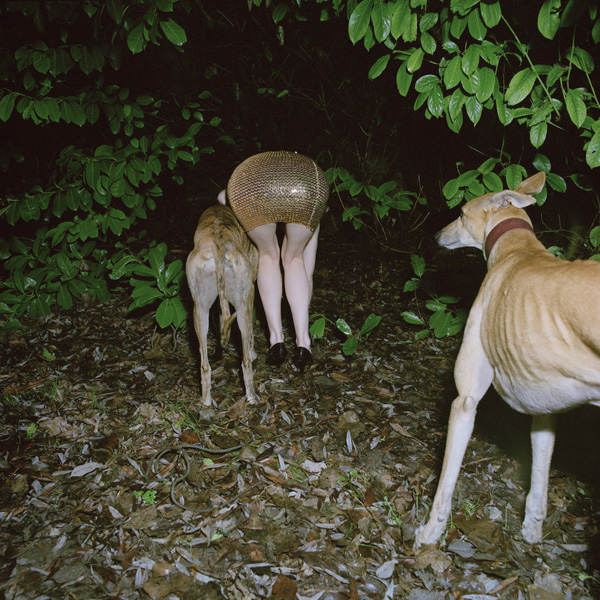
Do you still like these photos?
Yes. I have been photographing in black and white recently. I like black and white photography. It’s just I couldn’t find anything to snap much in black and white because I wanted to grasp the moment.
Black and white – is it only about the past?
Sort of. There is always some distance. Theoretically that is a very different kind of drama and drama has more distance.
Combative, highly charged use of flash and colour seems to be particularly dominant in your works. Do these elements have any particular significance or connotations to you?
Frankly, I don’t know but I have heard some people say that “you use colour like bright paint splashing it everywhere and make it playful maybe even if the subject is not playful”.
Despite humour and satire, in your colourful stories I can feel sadness, some horror and heaviness. Why do you like that kind of stories?
Another thing that influences me is fiction. If I had a skill, I would be a fictional writer. Some of my favourite authors are J. G. Ballard, Carson McCullers, John Steinbeck. In particular J. G. Ballard. He has quite nasty, harsh, dark stories. The most interesting thing about stories is you totally believe in them. I like stories with a lot of details, spaces, places, people. One of my favourite Ballard’s book is Kingdom Come. It’s about society that’s going very badly wrong. In a way it is very much like my Basingstoke project. Actually it came after the Basingstoke, but it has a similar sensibility, sentiment. Another thing is that there are a few books that I was very obsessed in childhood, like George Orwell’s 1984. Sensibility of Orwell’s writing and Aldous Huxley’s Brave New World – both of them you can feel in The Basingstoke project.
How conscious is that impact to your photography stories from literature you have read?
I just like the stories. I’m not thinking that I want to make this like Orwell’s novel, but when I look back, I can see that’s very similar I was feeling about those books. So also on a very funny way Franz Kafka’s Metamorphosis has a connection with the Cockroach Diary.
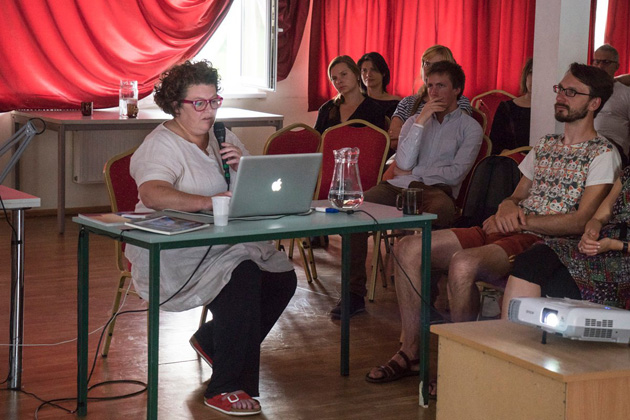
What have you learned most about the British culture throughout your career?
I think you always discover something new. As a photographer you have this huge privilege to go to places you wouldn’t normally go. For example, I went to sixteen different offices. When can you do that? I saw there aggressive individualism because of modern function and politics. I didn’t really realize it until I went to very competitive office environments in London. The Cockroach project made me think about a lot of things that British people are embarrassed about.
Like what?
It’s about the culture of British people. They don’t celebrate success, on the contrary – it embarrasses them. We never have parties with successes especially in the middle and upper classes. The working class is different – they celebrate success much more. But in the middle and upper classes it’s considered as a something crude or gross.
Do you celebrate success?
I once tried to, but it’s very difficult in that kind of society. It’s just a thing about Britain that you notice and we have some very crazy situations and divisions about people with money. It’s quite extreme and we have no system to help young mothers with children and there is no good childcare system. There is huge inequality between men and women over thirty because women mostly stay home with their children and so they don’t get on as quickly. These are politically social things that I noticed through doing photography. I have learned more about them, got more evidence and awareness about this kind of a thing.
Tell about your experience, revelations and transformation while studying under such tutors as Martin Parr and Paul Graham!
Studying with Martin and Paul was amazing, the debate was continuous. I also studied with Karen Knorr – among these three tutors we were pushed and pulled through a massive range of ideas, suggestions and hard work. I loved the humour in Martin’s work, the cleverness and detail in Paul’s and the irony and craft in Karen’s – my first projects Basingstoke and Work Stations paid tribute to all of them.
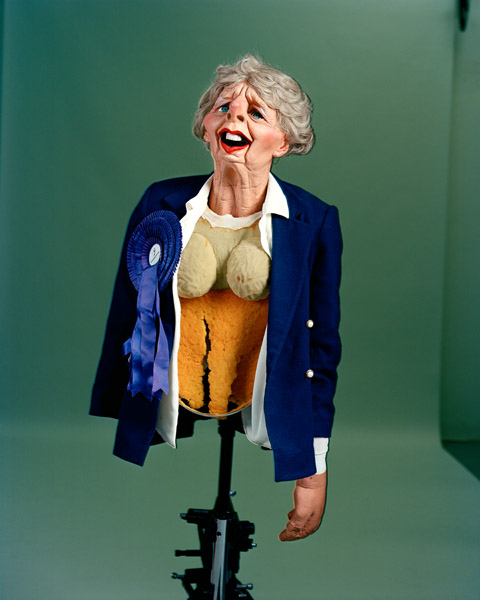
How would you describe your collaboration with Andrew Bruce? What significance does it have in your creative biography?
I have been collaborating in various ways since 1983, and I have always been interested primarily to divert the direction of work, to have an unexpected aspect and sometimes to divert the power from the solo photographer. Mostly I have collaborated with musicians and with my subjects. In 2014 there was the first time I collaborated with an artist who uses photography. Andrew has been my assistant for five years or more and several projects came up that I thought might interest him as much as they interested me. I also knew that Bruce would be the right one, his interests complement mine and are intriguing, our subjects are different but some of the feeling crosses over. We are both interested in something that I can only describe as an edginess or darkness. So we tested collaborating on a series called Spitting, photographs of the puppets of politicians made for the 1980s satirical comedy TV show Spitting Image.
Bruce mainly photographs still life but my subject is people, so life-sized puppets were perfect for both of us. It was very successful and was shown at The James Hyman Gallery early in 2015.
You are not only a photographer, but also a full time professor. How did it happen that you are teaching at the same school where you studied?
It’s literally a coincidence. I moved away from London back to the country for personal reasons. I was on my own with two small children quite close to where my parents lived. I just applied for the position and got it. In 2008 I got professorship, which is even better because I have less teaching time and more time for research. As I run the MFA programme, I can design it how I want and it fits with me really nicely.
What is your teaching style?
I structured the course in a very particular way. The whole first year nobody finishes anything, just makes experiments and tests.
To develop their ideas?
Yes, ideas and techniques mixed together. They need to have things they want to communicate or deal with, or to look at and everyone has to leave their comfort zone. I am also trying to focus my students on the area that I’m interested in. For example, in photography I am trying to build a research centre for women in photography. That’s why I am interested in my students to come to study something that has to do with women in photography or a piece of work as a woman photographer.
As a teacher, do you have any advice for students and emerging photographers?
There was a great article Photography is Easy. Photography is Difficult written by Paul Graham. He was a big inspiration for me in the beginning. I think he was very clever in the way he put series of work together, always breaking rules in photography. I believe it’s really interesting and if you go down the easy route it will be very difficult to be a photographer. It’s hard basically but photography is one of these things you pick up in point of click. Seems so easy but to make interesting photography it’s really difficult and for a long time you just have to not only take photographs, but also think about how they work together, on a page, at a gallery. Thinking about all these things and the way you make it with the respective camera or light. You have to be incredibly passionate. Even if you take a lot of photos you’re not going to necessary get something quickly. Workshop is very interesting because there are other things about photography, which are much hidden.
